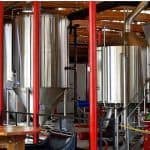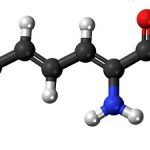Both types of fission are the types of asexual reproduction, in which the binary fission give rise to two daughter cell from the parent cell, whereas in multiple fission, the parent cell gives rise to numerous daughter cell. Binary fission is one of the most common methods of reproduction in the prokaryotes, while multiple fission occurs in some parasitic species and … [Read more...] about Difference Between Binary and Multiple Fission
Difference Between Bioreactor and Fermenter
A system in which the organisms are cultivated and provoked to produce the desired products is called a bioreactor. In contrast, the fermenter is the system used for the fermentation process to produce the desired outcomes. Mainly in the bioreactor, plant and animal cells are used, while fermentation is limited to microbial use only. These are types of closed- system/ … [Read more...] about Difference Between Bioreactor and Fermenter
Difference Between Kwashiorkor and Marasmus
Kwashiorkor is the severe protein deficiency in the children, while marasmus is the severe deficiency of the nutrients and insufficient intake of calorie. This is the primary difference between the two. Protein-energy malnutrition (PEM) or Protein-calorie malnutrition (PCM) is the result of the deficiency of the carbohydrates, fats and especially proteins. The above two … [Read more...] about Difference Between Kwashiorkor and Marasmus
Difference Between Blood and Lymph
Blood is the type of connective tissue found in our body and plays a significant role in transporting various substances to different parts of the body. Lymph is the white colour fluid tissue, made up of white blood cells and lymphocytes and plays a significant role in carrying the white blood cells to and from the bones and lymph nodes. Secondly, Blood plays a leading role … [Read more...] about Difference Between Blood and Lymph
Difference Between Molecules and Compounds
When the chemical bonds unite any atoms (two or more) is known as a molecule. But such type of molecules that consist of different atoms (two or more) of different chemical elements are known as compounds. However, it is a fact that all compounds are molecules, but all molecules are not compounds. So, we can say that any combination of atoms is a molecule, but when the … [Read more...] about Difference Between Molecules and Compounds




